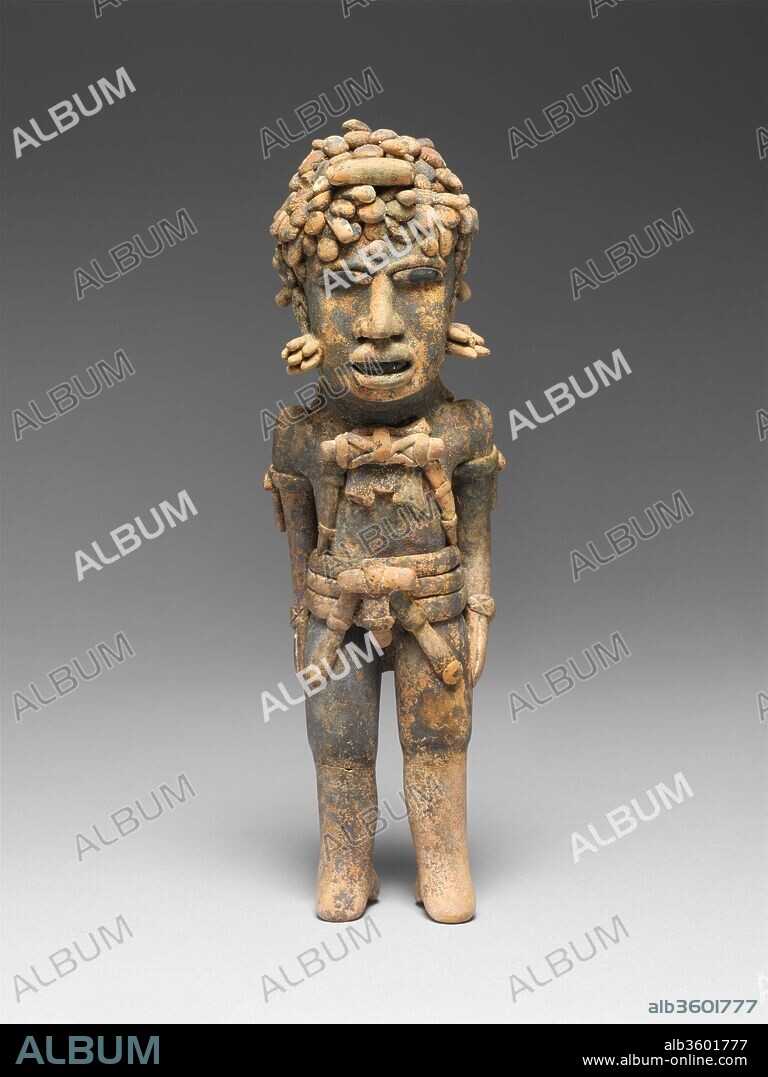alb3601777
figure

|
Add to another lightbox |
|
Add to another lightbox |



Title:
figure
Caption:
Figure. Culture: Veracruz. Dimensions: H. 8 1/2 x W. 2 5/8 x D. 2 1/8 in. (21.6 x 6.7 x 5.4 cm). Date: 7th-10th century.
The modern state of Veracruz lies along the Mexican Gulf Coast, north of the Maya lowlands and east of the highlands of central Mexico. Culturally diverse and environmentally rich, the people of Veracruz took part in dynamic interchanges between the three regions that over the centuries included trade, warfare, and migration. During the middle centuries of the first millennium, the artistically gifted Veracruzanos created particularly inventive ceramic sculpture in diverse yet related styles. Each of these three standing figures is unique, but they share many details: the curled hair (or hats with curls) with traces of white coloring, the barlike chest ornaments, the projecting ear ornaments, and the elaborate belts or loincloths. The wide mouths are open to show off sparkling teeth that have been blackened with hematite crystals, which are rare on Veracruz ceramic figures. The black pupils of the wide eyes, on the other hand, are a resinous material called chapapote that is not uncommon on Veracruz figures. The varying details on the costumes give the figures an odd appearance of rank, as if they were performers of some kind or military men in dress uniform. It is a narrative note unusual among groups of ceramic figures of this period.
Technique/material:
ceramic
Museum:
Metropolitan Museum of Art, New York, USA
Credit:
Album / Metropolitan Museum of Art, NY
Releases:
Model: No - Property: No
Rights questions?
Rights questions?
Image size:
3150 x 4200 px | 37.9 MB
Print size:
26.7 x 35.6 cm | 10.5 x 14.0 in (300 dpi)
 Pinterest
Pinterest Twitter
Twitter Facebook
Facebook Copy link
Copy link Email
Email

